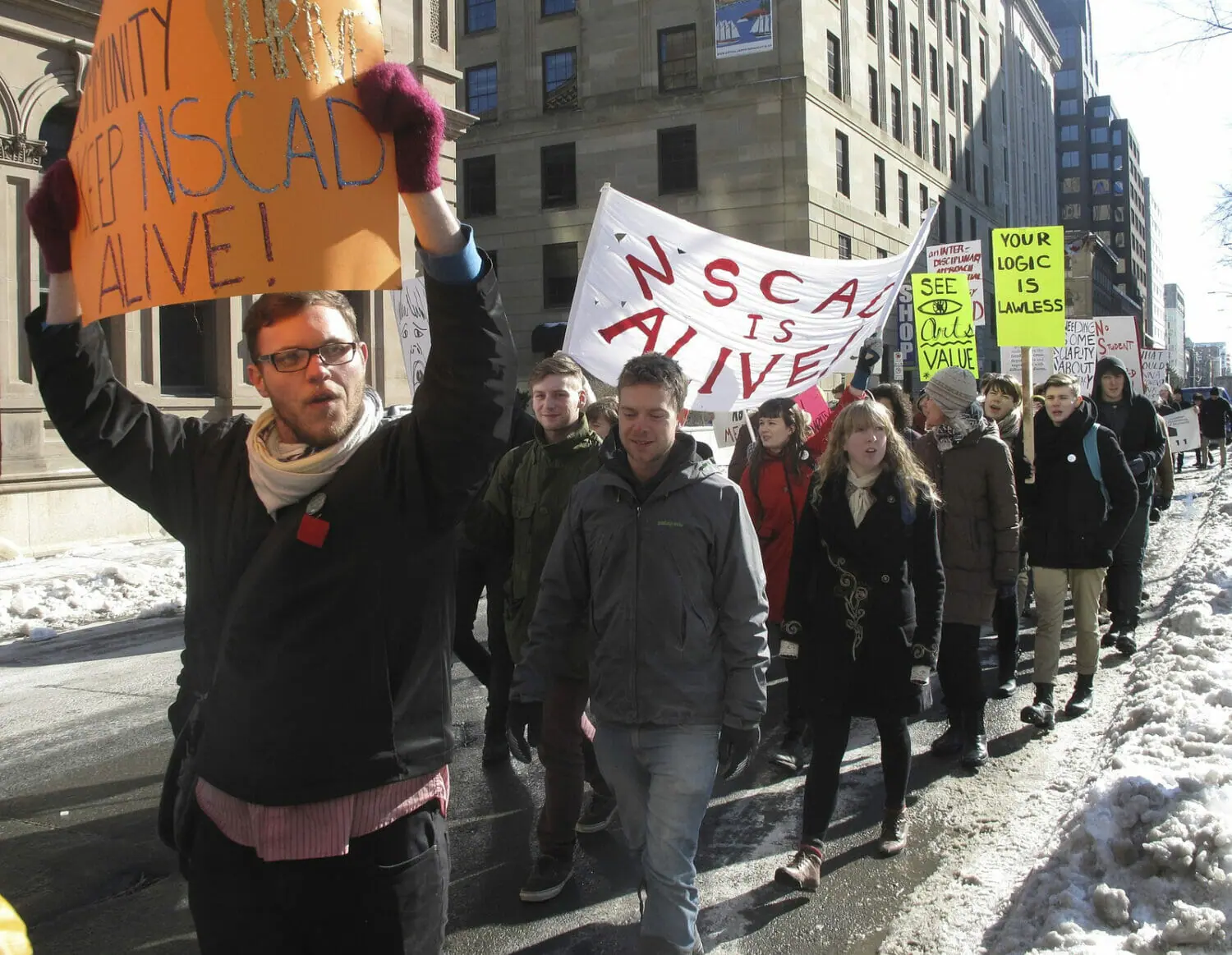
Almost 200 students, staff and faculty marched to Province House to demand funding for the Nova Scotia College of Art and Design (NSCAD) on Feb. 6. Without more funding, NSCAD is in danger of losing its autonomy.
“I think the rally went really well,” says Sarah Trower, NSCAD student union president.
“We also had students from King’s and Dal and faculty and staff come out. We marched from Granville to Province House and delivered our manifesto.”
The manifesto, for a “vibrant, strong, and independent NSCAD,” was created collectively by students, staff, and faculty. It was voted on and approved by all of their unions.
Its main goal is the autonomy of NSCAD.
Over 100 students, approximately 10 per cent of the total student body, disrupted a NSCAD Board of Governors meeting to present the manifesto.
According to Trower, half of the board members left while the rest stayed and listened. At the time of print, the board has yet to formally recognize the manifesto.
“Now we are focusing our efforts on the government,” says Trower, “because they are the body putting pressure on NSCAD and ultimately they’re the ones who decide if we’re funded adequately or not.”
Talks of merging with a larger university began with the 2010 O’Neill report, which was commissioned by the provincial government to assess the economic situation of Nova Scotia’s universities. The report called for the merging of NSCAD as well as the Nova Scotia Agricultural College with Dal, as well as a decrease in provincial funding.
Now, with a deficit of $1.36 million, the government is telling NSCAD to produce a long-term plan for sustainability by March 31, according to an article by The Chronicle Herald.
“Most schools have debt and our debt is not huge compared to that of other schools,” says Trower.
“NSCAD is being targeted, similarly to how we feel we would be targeted as part of a larger university, because artists are picked on first. We have been asked to write reports after reports and are in a state of constant crisis.”
In 2011, Harold Windsor, a special advisor to the government, suggested eight recommendations for NSCAD. The university agreed to follow his advice in exchange for a one-time $2.4 million investment.
“NSCAD’s financial problems are not sudden, new or a surprise,” said Windsor in his report.
“They were evident at least three years ago but persisted and grew. NSCAD today is operating at a loss equal to more than 10 per cent of its annual budget. The situation is not sustainable.”
The university has faced years of financial instability. Their debt a year ago was estimated at $19 million, according to the Windsor report.
“Some people are proposing merging with Dal or SMU,” says Aaron Beale, VP (academic and external) for the DSU. Beale says his views do not represent the DSU.
“But they [the government] are still going to throw a bunch of money at it because neither Dal or SMU want to take on the debt of NSCAD. So the government is going to spend that money, it’s just whether NSCAD remains autonomous or not.”
The debt is largely attributed to federal budget cuts in recent years. NSCAD also has $9 million left to pay for the construction of its waterfront campus.
“They’re asking us to sign on to an agreement that basically affiliates or amalgamates us with another university,” says Trower.
“They want us to walk blindly into any agreement that comes forward.”
NSCAD isn’t the only university with an unexpectedly large deficit this coming year. Its deficit is only 13 per cent of the $17.5 million shortfall facing Dal. But NSCAD relies on the federal government for approximately 60 per cent of its total revenue, according to the Windsor report, compared to the average 30 per cent that other universities receive.
“We need to be properly funded,” says Trower. “Right now we are funded less than journalism students, less than theatre students, and less than music students. We need a funding formula that adequately represents the studio-based education that’s offered here at NSCAD.”
NSCAD is currently reviewing what a merger would mean with a larger university.
“It’s in some ways the most important issue for the university system in the province right now,” says Beale.

Recent Comments